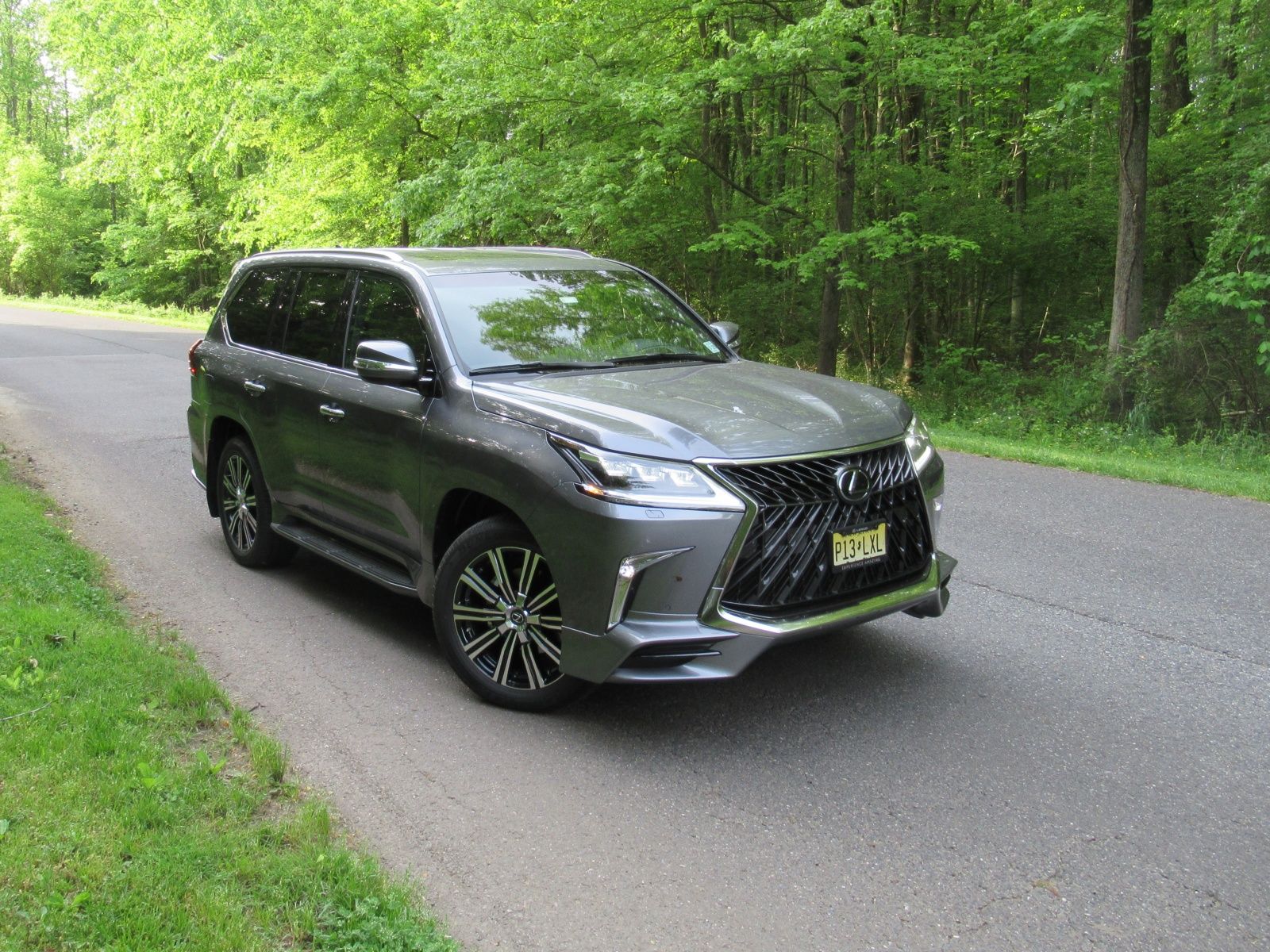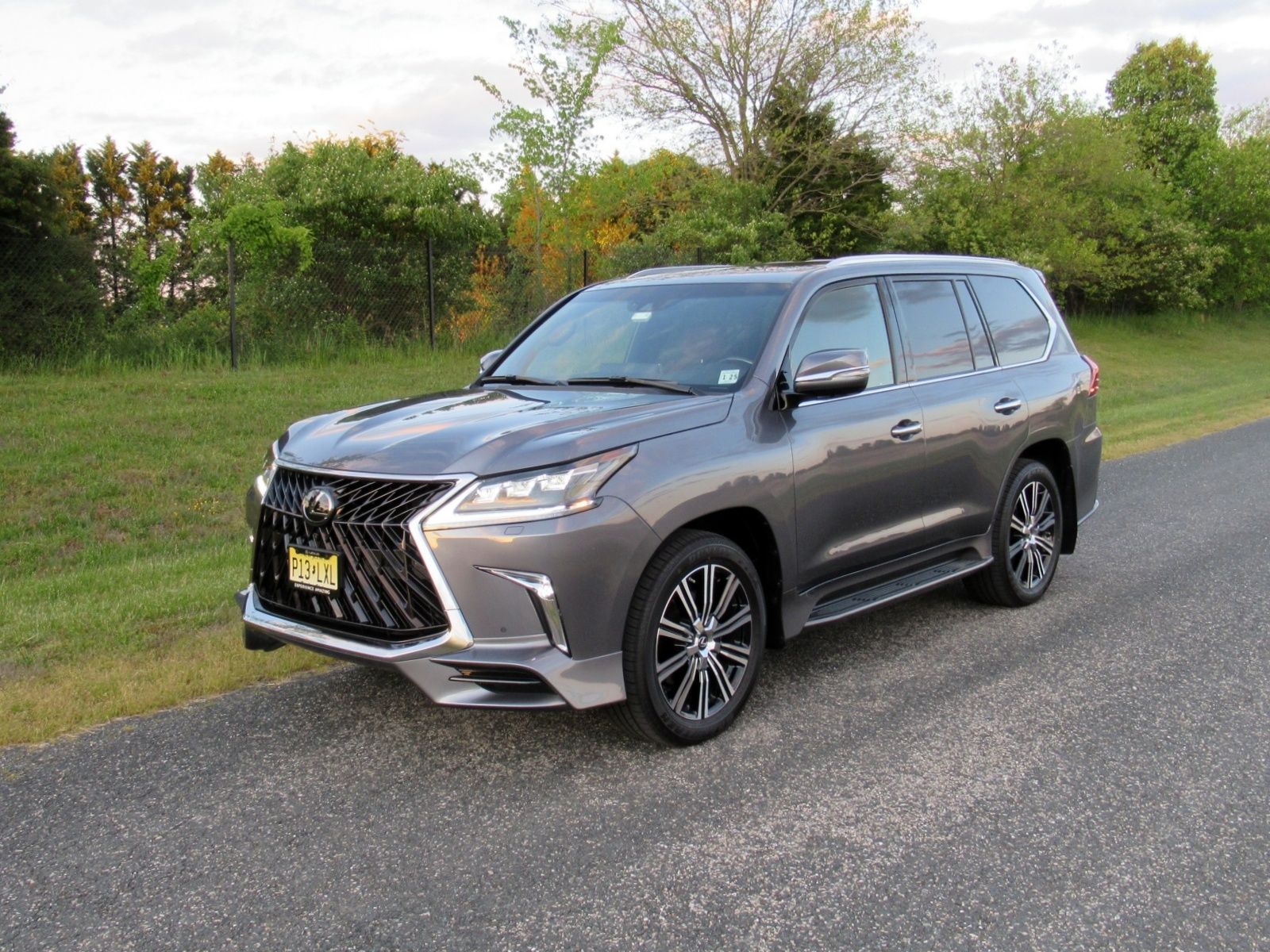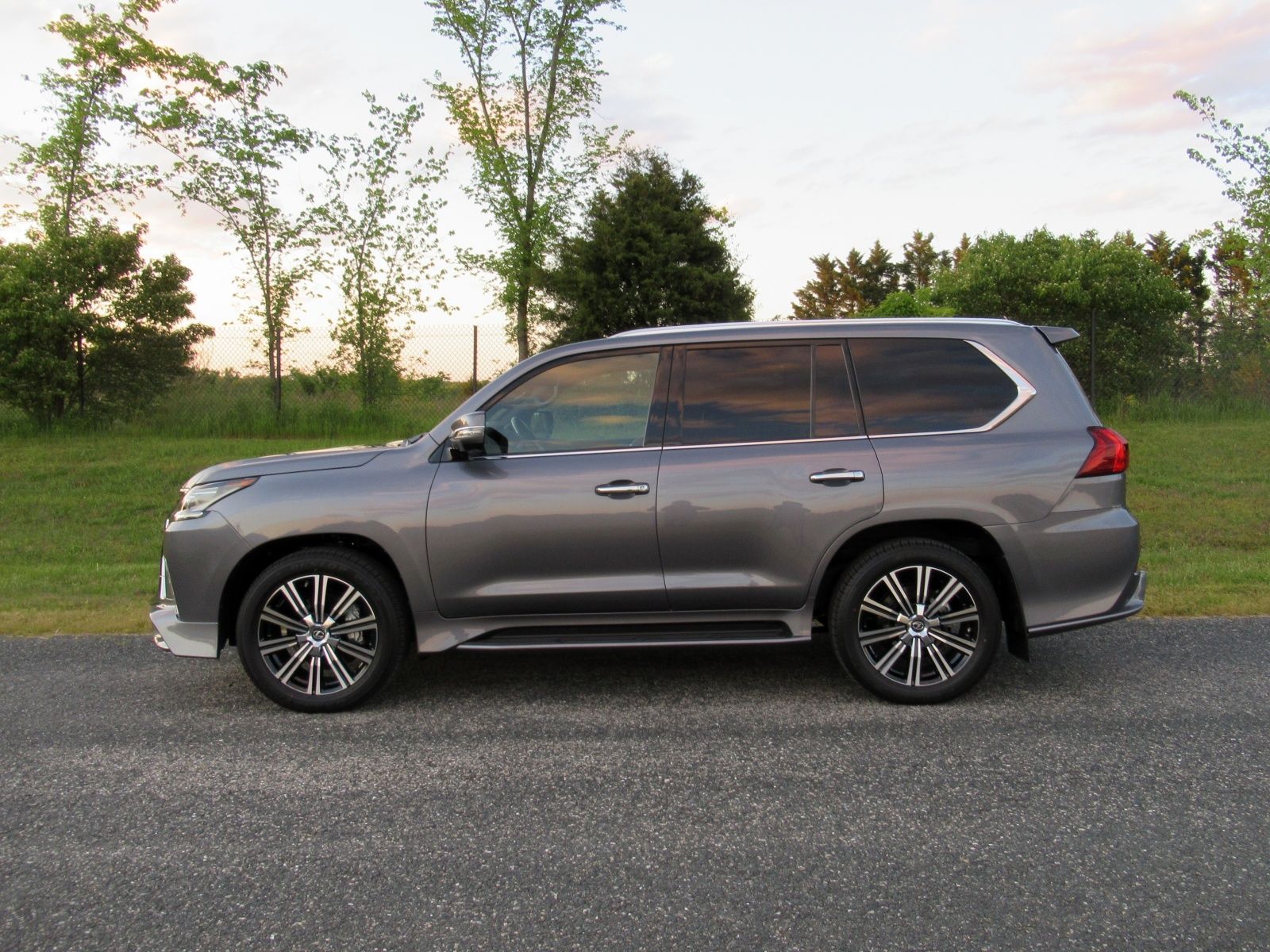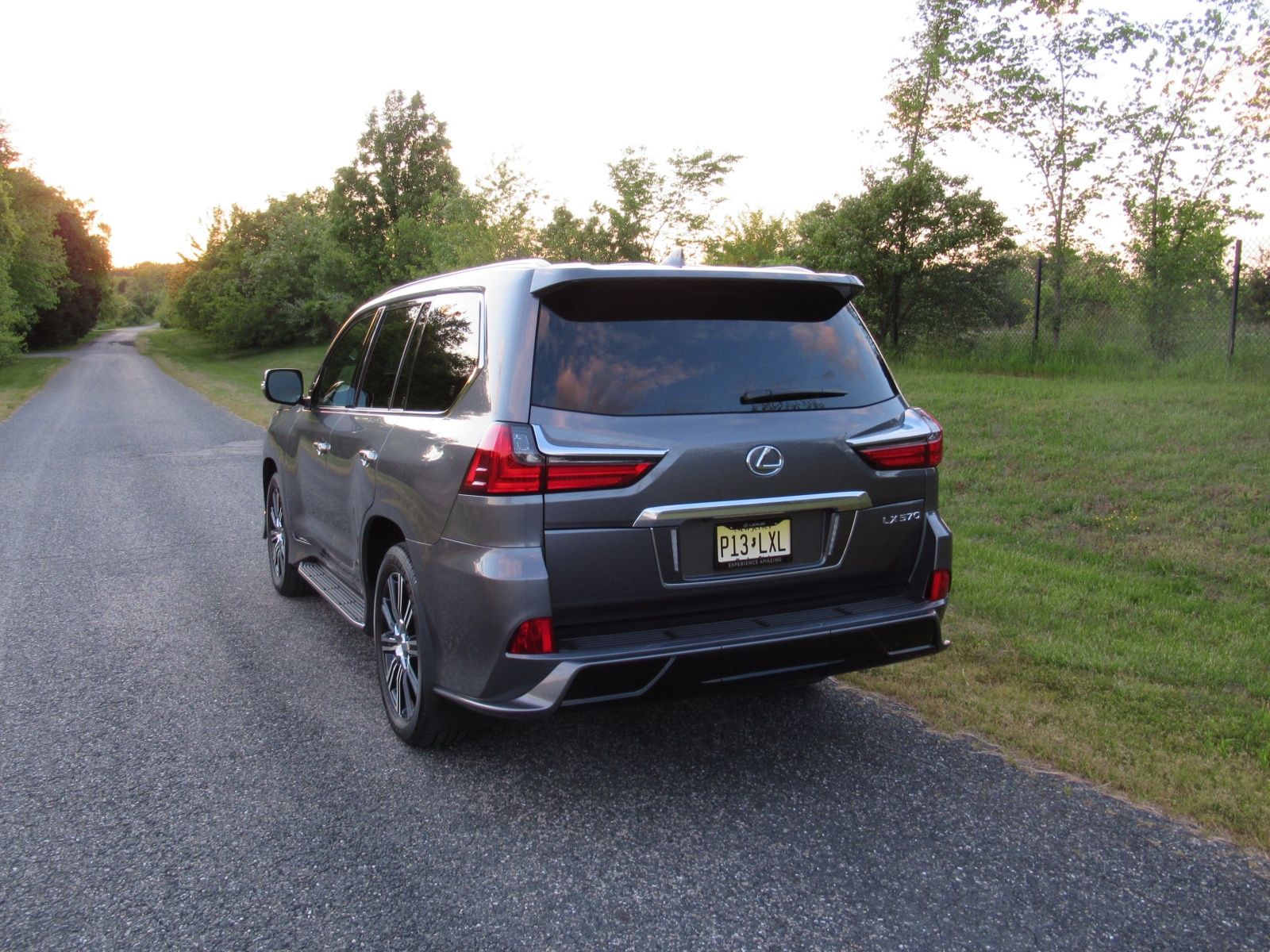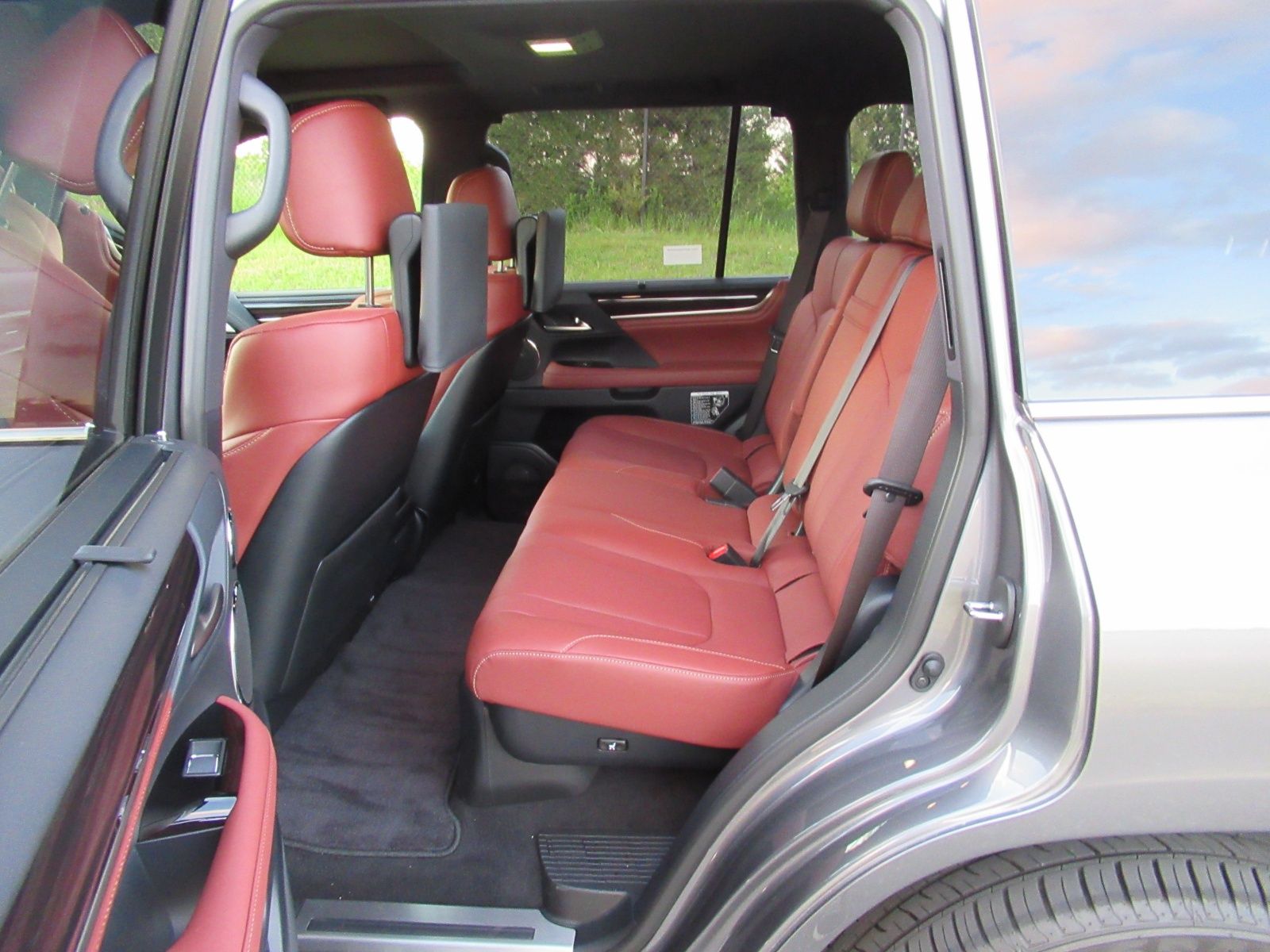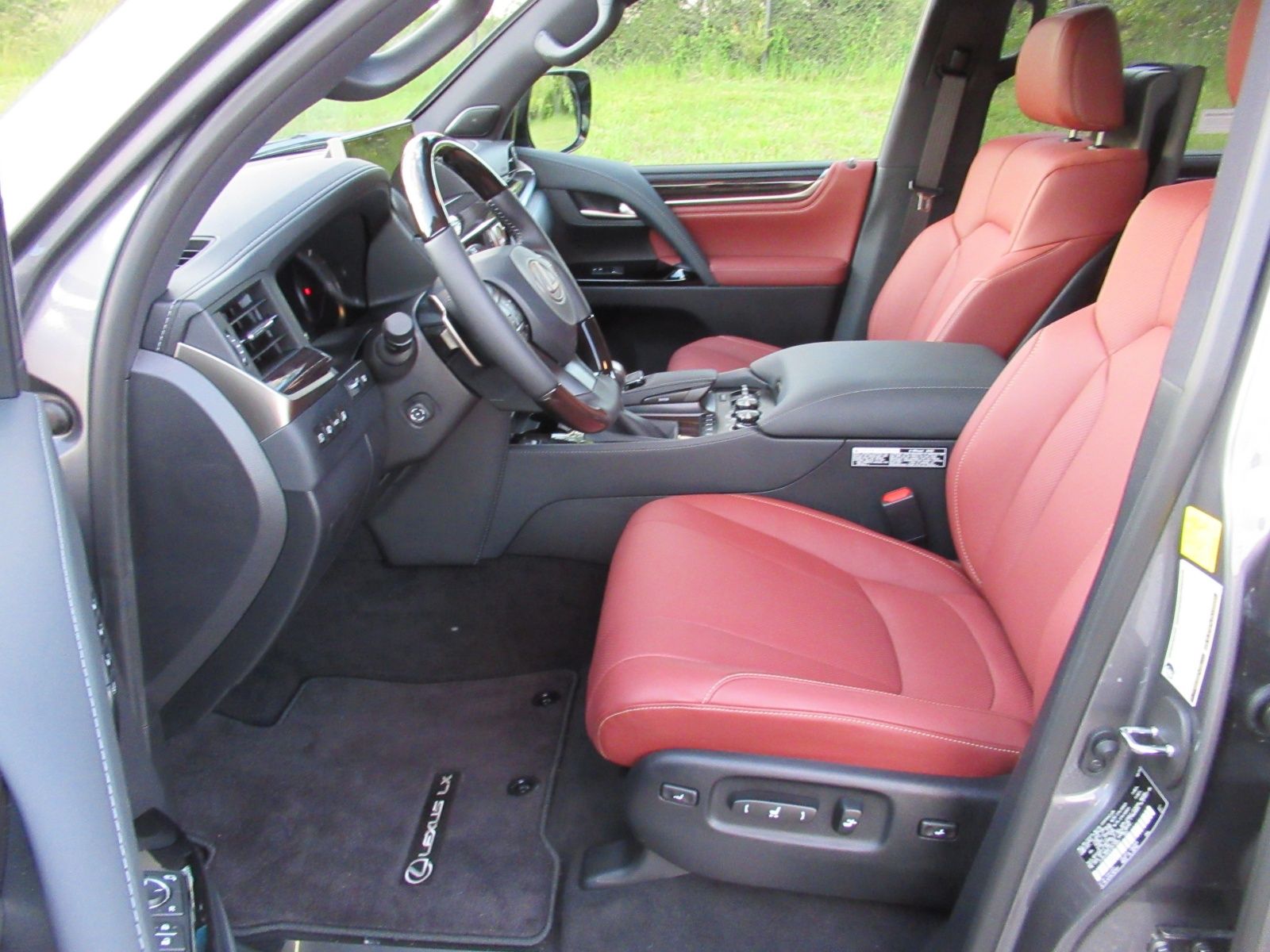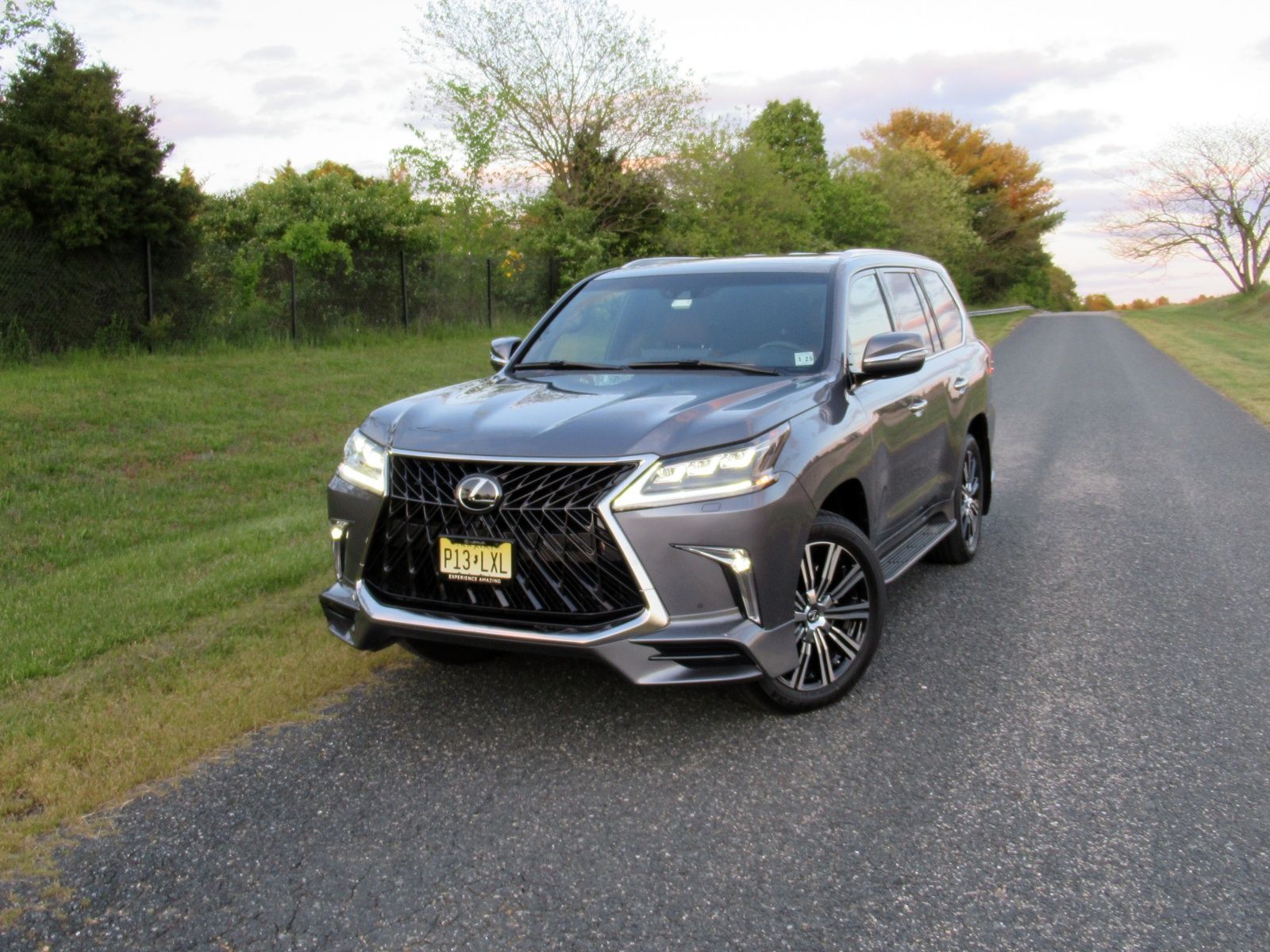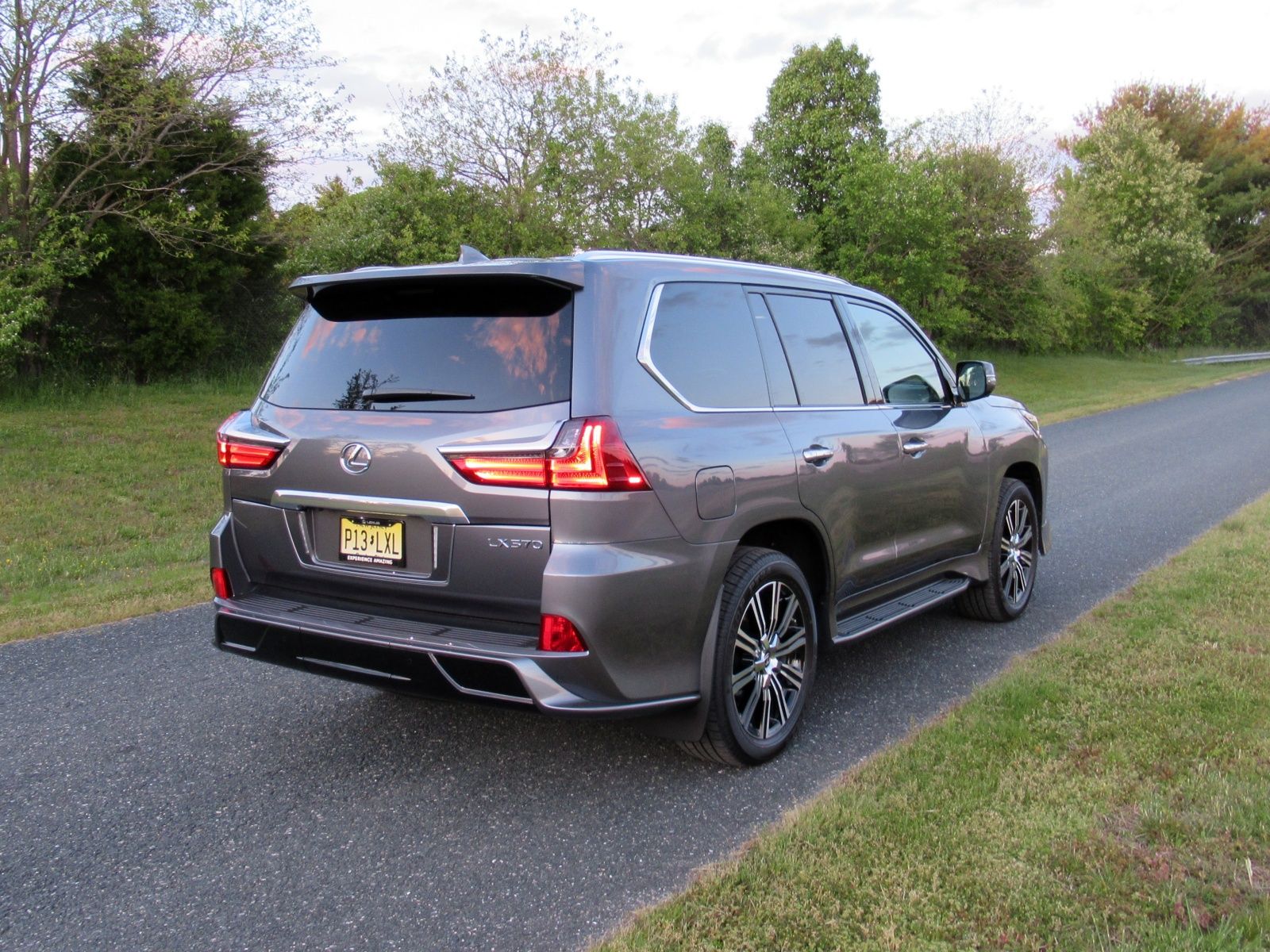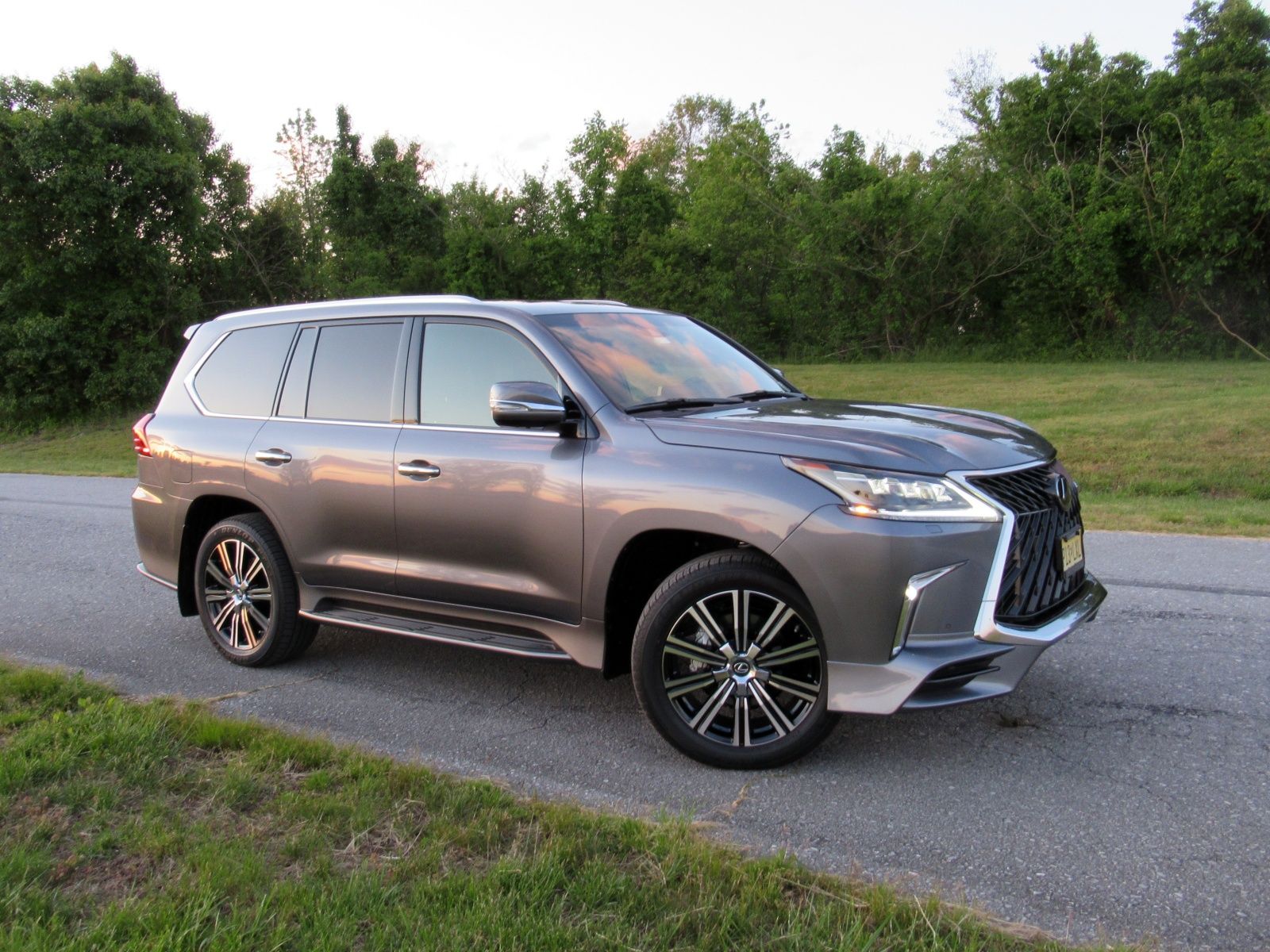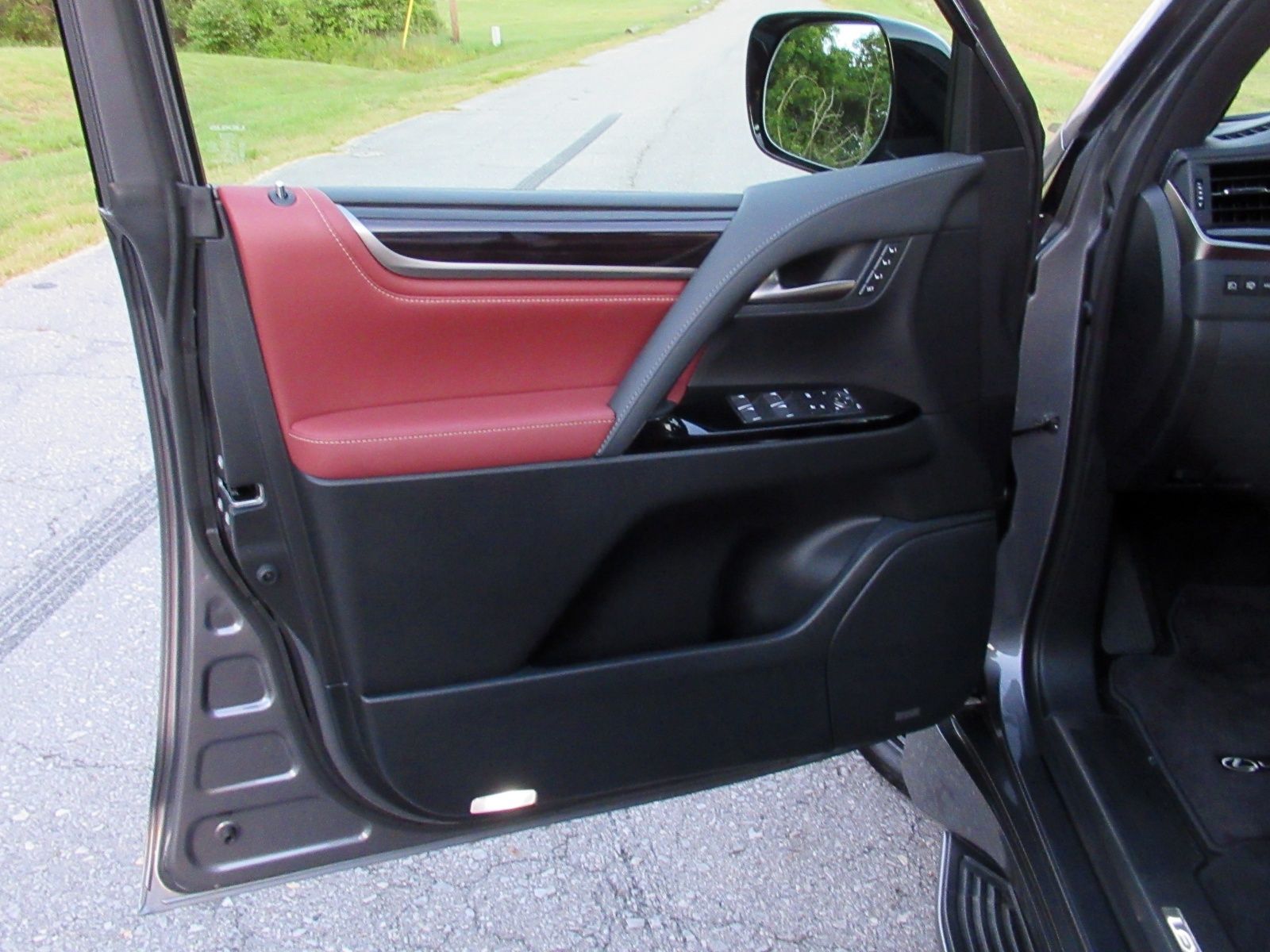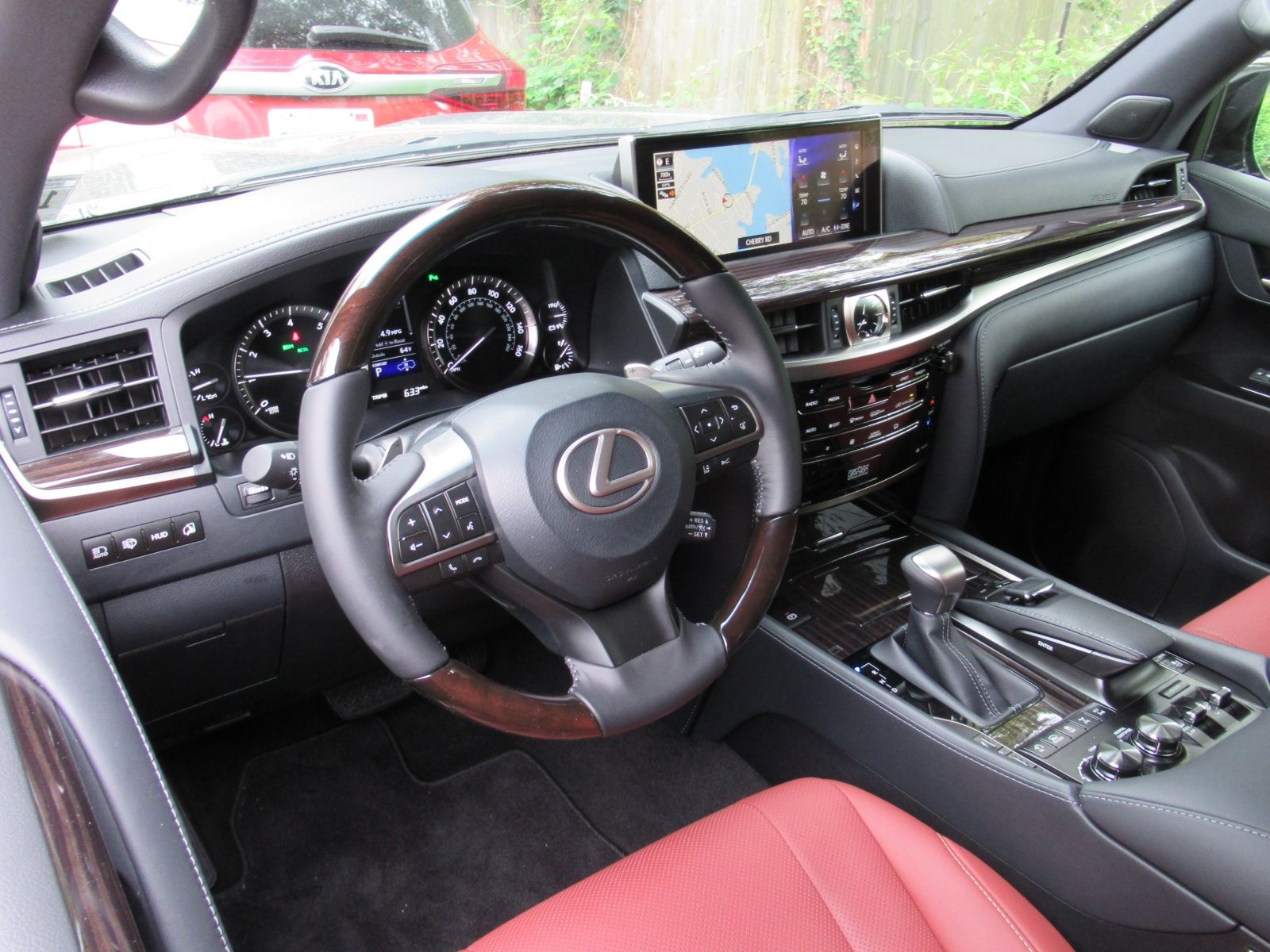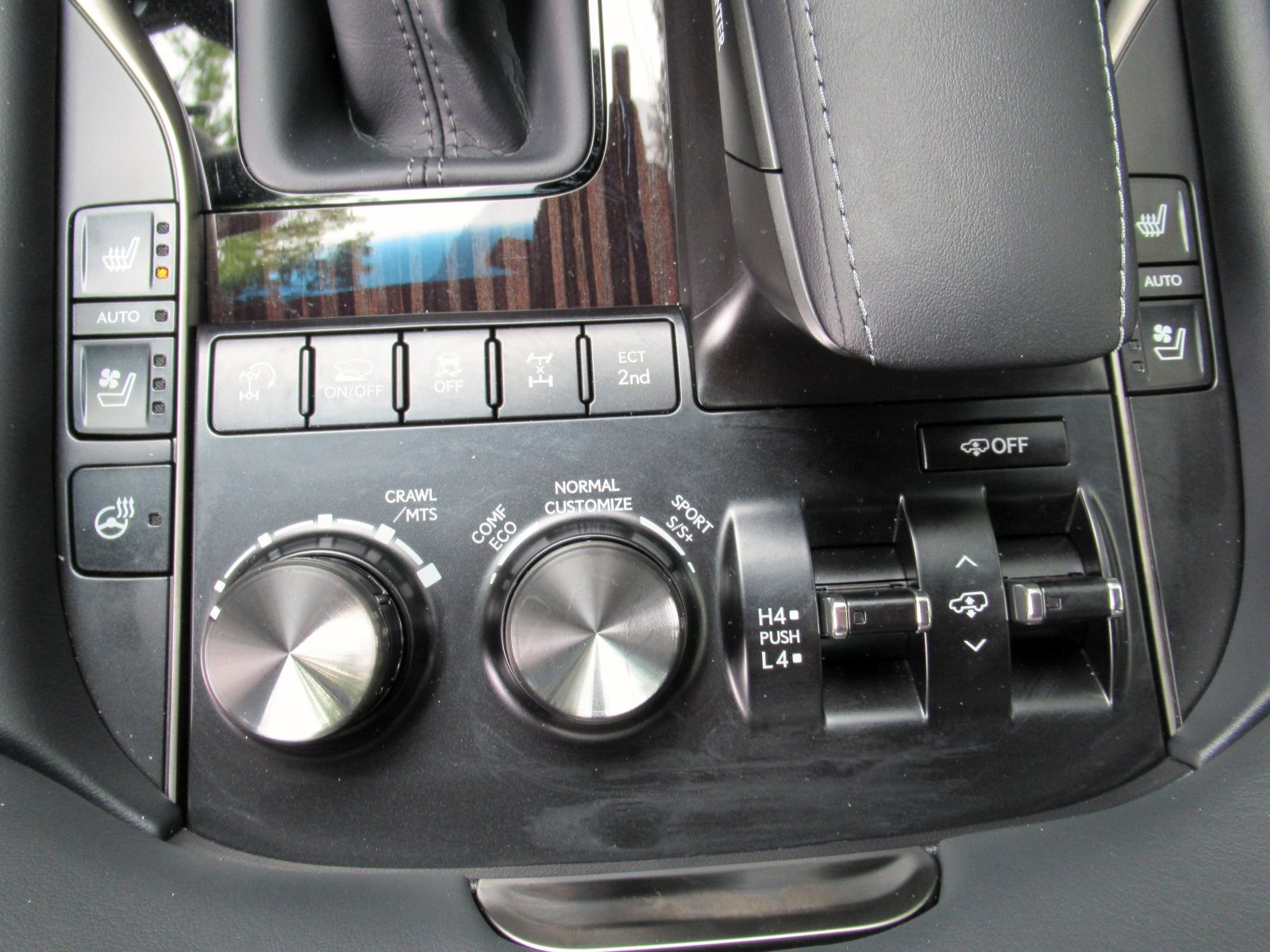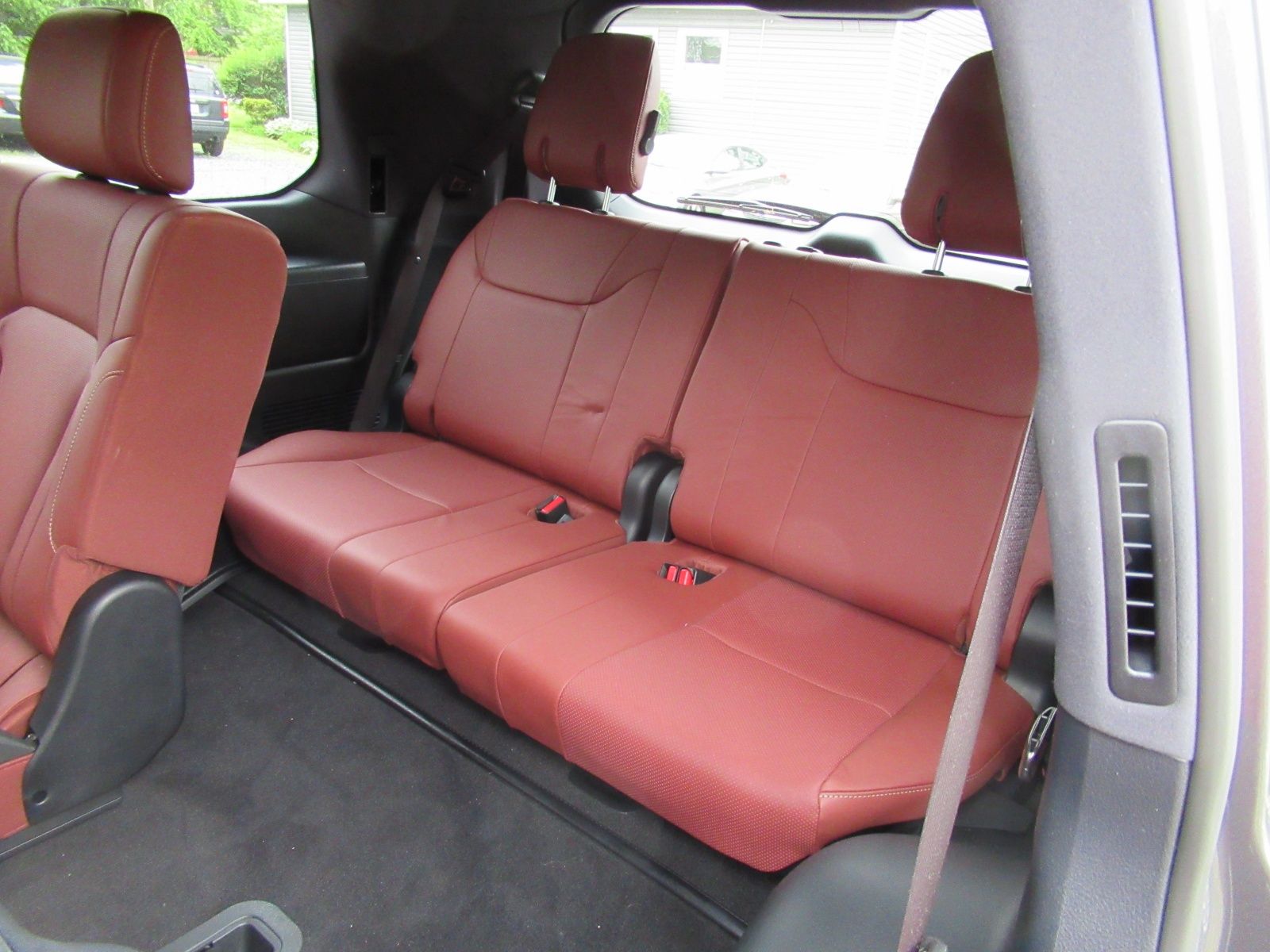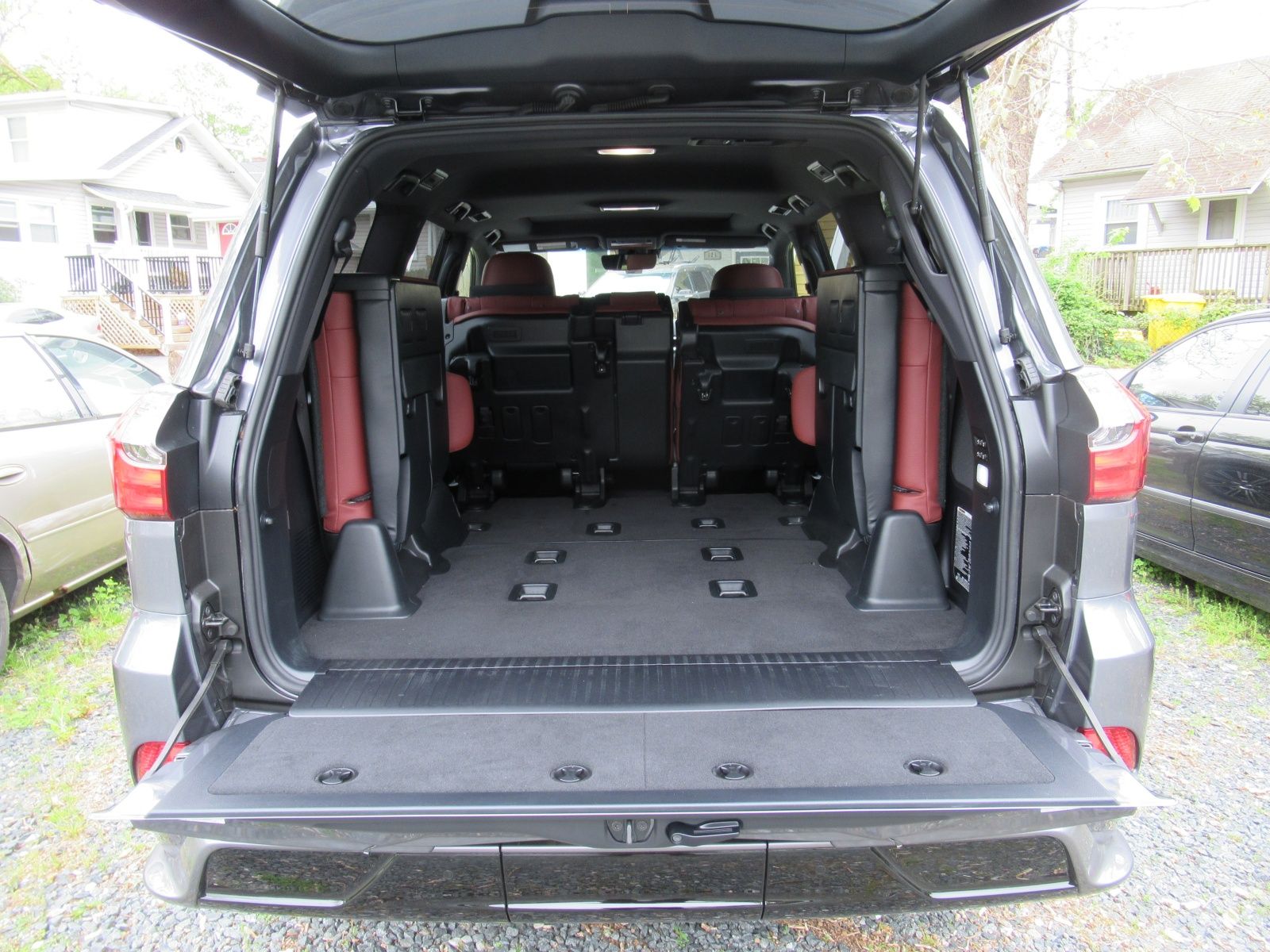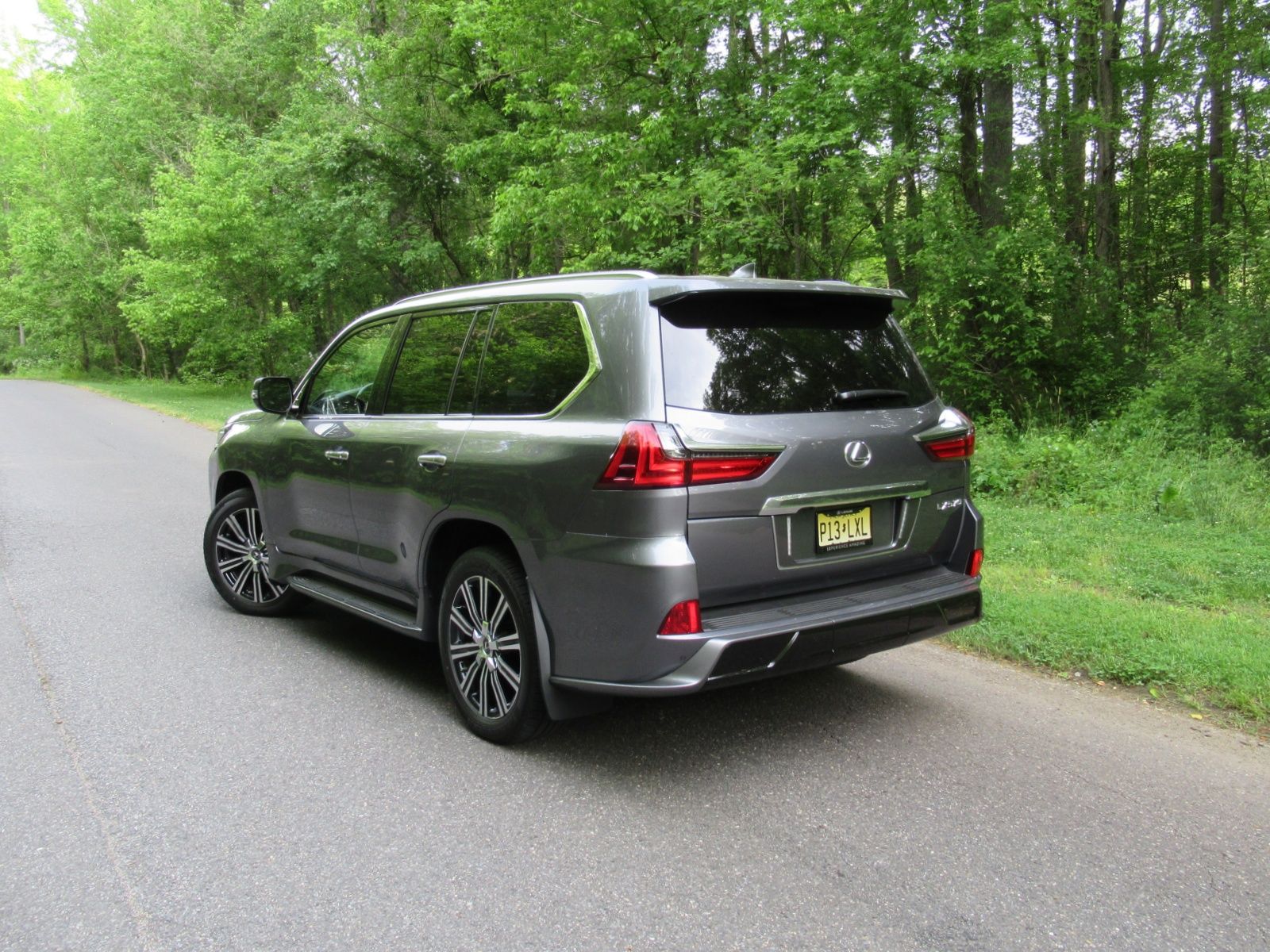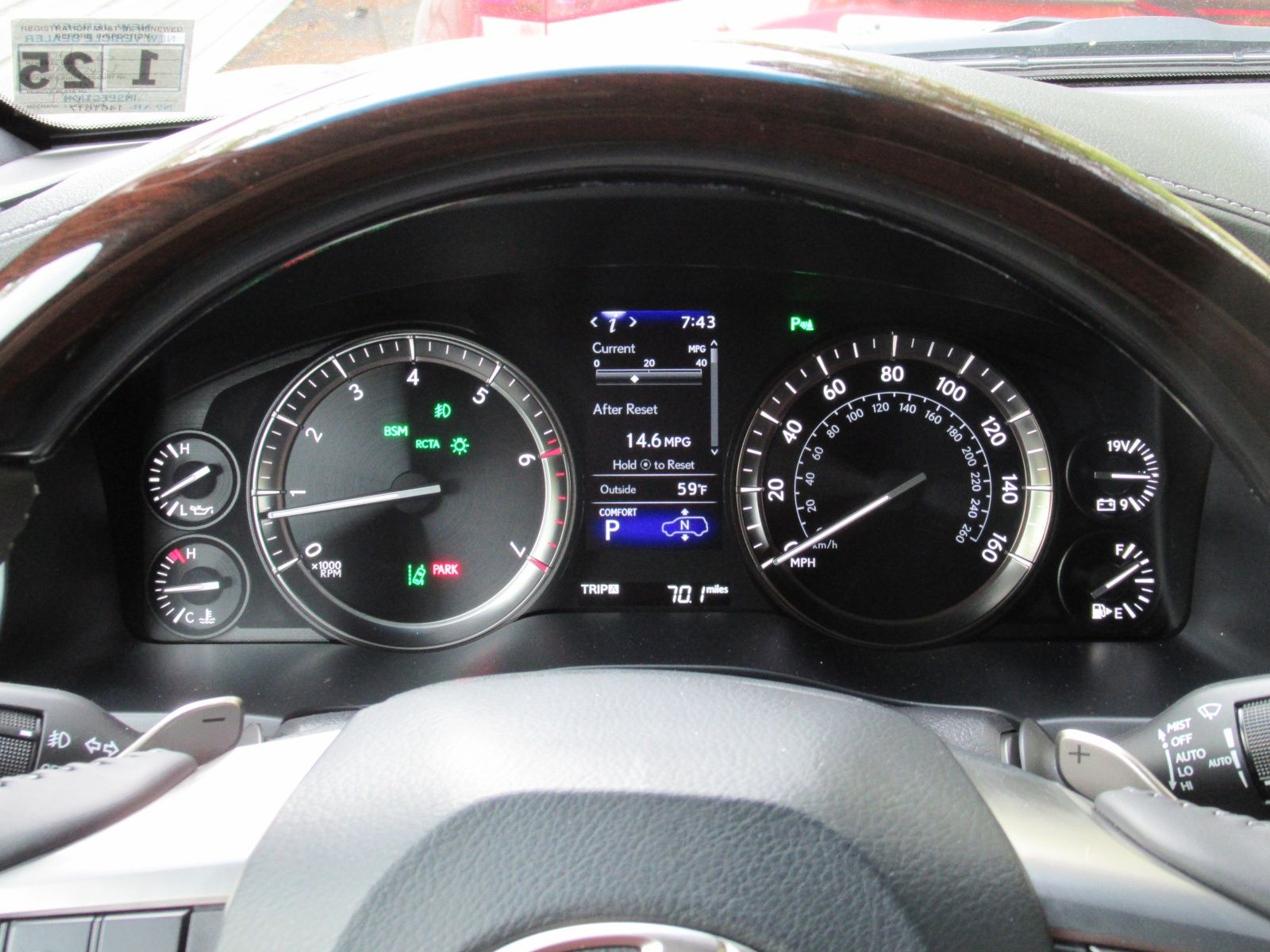From the company that invented the luxury crossover, the 2020 Lexus LX 570 is a decided throwback. This is a full-sized SUV that’s derived not from a car platform like you’d find in a Mercedes-Benz GLS or BMW X7, or even from the family-focused Toyota Sequoia.
Instead, it borrows its underpinnings from the Toyota Land Cruiser — one of the most capable SUVs you can buy. The LX 570 is no mere leather-lined cocoon, but also a boulder-climbing machine that employs a mix of electronic gizmos and burly suspension components to tackle challenging terrain.
2020 Lexus LX 570 - Driven
- Make: Array
- Model: 2020 Lexus LX 570 - Driven
At the same time, its Lexus styling cues and fancier suspension reduce its off-pavement capability compared to the Land Cruiser. Put all those factors together, and longtime conventional wisdom has been to skip the LX and go straight to the Land Cruiser. After all, the Toyota is already a well-equipped luxury SUV, costing $85,000. And if you’re going to give up interior space and fuel economy to get off-road capability, why compromise that with bigger wheels and low-hanging plastic trim?
Well, if you haven’t been paying attention, Toyota has worked hard in recent years to distinguish the LX 570 from the Land Cruiser. The big Lexus now boasts more differentiated styling, a more upscale dashboard, more features, and even improved on-road driving dynamics. The changes aren’t enough to make it the best on-road luxury SUV you can buy. Buyers looking merely for a Lexus experience with a roomier interior will likely be disappointed.
What’s more, the base LX 570 barely costs any more than its Toyota cousin, starting at $86,480, though options pushed our test vehicle to $103,224. Let’s go over the details we learned from a weeklong test of the 2020 Lexus LX 570.
2020 LEXUS LX 570 - DESIGN AND UTILITY
The second generation (1998 to 2007) had rounded quad headlights. The current generation had slightly sharper, more defined headlights than the Land Cruiser when they debuted in 2008, but it took until a mid-cycle update in 2016 for the LX to become more visually distinguished from the Toyota. While no everyone will pick the Lexus’s look, this differentiation makes it easier for buyers to find a model that fits their taste.
The latest LX 570’s defining design element is the Lexus “spindle” grille: a massive hourglass that runs from the hood to nearly the bottom of the bumper, and fills the space between the high-mounted headlights. It’s like a Lexus sports sedan fascia is stretched over a tall SUV body, and this dressier front end also makes the LX 570 a startling 5 inches longer than the Land Cruiser — all in the nose. Our test vehicle included the newly launched Sport Package, which replaces the horizontal chrome grille slats with a black mesh and also includes a body kit that Lexus calls “lower spoilers” on the front and rear — dressing up the SUV to look less like a box, but at the expense of maximum ground clearance and approach angles. The LX 570 has the same profile and huge side windows as the Land Cruiser, but the LX’s mid-cycle update added a pronounced kink to the D-pillar for extra flair compared to the Toyota’s functional, all-business look.
However, other full-size SUVs are much longer than the LX 570 and have a much longer wheelbase, often by a difference of 10 inches.
You feel the pinch of the LX 570’s smaller size inside. Not only does it have a smaller footprint than these other models, but it also dedicates more of that size to a cosmetically extended nose. And heavy-duty suspension components eat up even more potential interior room. This means you get the full-on full-size SUV flavor from the front seats — a towering ride height and ample space to spread out — but less generous legroom in the rear two rows. Many big SUVs have surprisingly small third-row seats, and the LX 570’s isn’t among the best. And even the middle row fails to provide luxury-grade comfort; with the combination of middling legroom and a low cushion, many passengers will have to sit knees-up. At least they get huge windows, as the LX 570 and Land Cruiser still have the lower beltline common in older SUVs. The three-row LX 570 seats eight passengers, with three-passenger benches in both the middle and third rows. The cargo door opens in a split, with the largest section swinging upward and then a small tailgate dropping down. This approach not only provides a place to sit but also reduces the clearance you need to open the back hatch.
That’s more like what you’d find in the typical midsize SUV than a full-size model. The LX 570’s third-row seat flips up to the sides of the cargo hold rather than dropping flat, and its middle row tumbles forward. This leaves an especially small cavern between all these seats that have folded in different directions, though the cargo specs include additional luggage stacked above the tumbled second row. As an added inconvenience, the middle row doesn’t have room to tumble forward if the front seats are all the way back — and the driver’s seat automatically slides all the way back when you shut off the engine.
Buyers can choose to skip the third row, which increases total cargo space by 10 cubic feet because the bulky folded seat is gone; competitors like the Land Rover Range Rover and the Mercedes-Benz G-Class don’t offer three-row seating or this much cargo room anyway. The LX 570 can tow a healthy 7,000 pounds, though that’s a little less than most competitors and the Toyota Land Cruiser (which handles 8,100 pounds).
The LX 570’s interior is notably richer and more modern than the Land Cruiser’s, a far cry from when they used to share the same dashboard design with a few different materials. While the Land Cruiser’s dash continues to look like 2008’s classy-conservative design — it has seen only subtle design tweaks and infotainment upgrades since then — the LX 570 got a more dramatic overhaul in 2016. The current LX shares its high-mounted 12.3-inch infotainment screen with other Lexus models, rather than the Land Cruiser’s 9-inch touchscreen that’s lower in the dashboard.
The center stack is slick and smooth, rather than the more function-focused Land Cruiser, and the backlight fades slowly in as you start the car — a classy touch. The front door pulls also look great while providing a sturdy place to grab. And most materials are appropriately rich. Still, the interior is generally more subtle and refined than the LX’s in-your-face exterior would suggest, at least aside from our test car’s available red leather upholstery.
A few common Lexus complaints detract from the overall experience. Lexus frequently uses too much mainstream-grade switchgear for secondary controls, like the basic plastic on the dashboard’s parking-sensor button and the steering wheel controls.
It’s a quibble for sure, but it’s fair to quibble on a six-figure luxury car. The gauges also look plain, with an uninspired design and lots of cheap, dated-looking indicator lights.
And lastly, the infotainment system is cumbersome, using a mouse-like controller to navigate among the screen’s various functions. Lexus has finally started to phase in touchscreens, but the LX 570 hasn’t gotten there yet. It’s the same story with Android Auto and Apple CarPlay smartphone integration, which also aren’t offered on the 2020 LX 570.
2020 LEXUS LX 570 - DRIVING IMPRESSIONS
We spent most of our time in the selectable “Sport+” mode, which firmed up the steering without making the throttle unnecessarily aggressive. By the standard of a big, heavy, body-on-frame SUV, the LX 570 cornered with composure — even before considering that its bones date to 2008. We still wouldn’t recommend pushing the LX 570 too hard, but there was no queasiness to be found as we piloted the vehicle on winding roads. The ride is also class-competitive with far less capable competitors; there is some jiggling even on smooth pavement, but that’s also our experience in the less poised, less off-road-ready Cadillac Escalade, Lincoln Navigator, and Infiniti QX80. Crossovers like the BMW X7 and Mercedes-Benz GLS will still blow away the big Lexus for ride and handling, as will the Range Rover.
Of course, the LX 570 is built for the trail, not just for the street. Its features include a lockable center differential, two-speed transfer case, hill-descent control, and Variable Gear-Ratio Steering, which improves maneuverability at the low speeds you’d use when scrambling around boulders. You can also choose among five off-road driving modes: rock, rock and dirt, mogul, loose rock, or mud and sand. And the LX 570’s air suspension can lift the vehicle by up to 3 inches.
We did not take our LX 570 off-roading, so we have to trust other journalists — those who were willing to risk returning their test vehicles covered with scratches and missing some low-hanging plastic trim — that this is a capable beast. A Range Rover is also a renowned off-road vehicle, but it feels less like a big, bulky truck on the road. That’s great if you want sporty handling, but less so if you actually value the Lexus’s truck-y flavor.
The LX 570’s engine was impressive in 2008: a 5.7-liter V8 with 383 horsepower and 401 lb-ft of torque, shared with the Land Cruiser as well as the then-new Toyota Sequoia SUV and Tundra pickup (which also have changed little over the intervening years).
But the LX 570’s only powertrain update since its debut was 2016’s change from a six-speed to an eight-speed automatic transmission. The result is decent acceleration and a pleasant enough engine sound — though don’t expect the holy-cow craziness you’ll find in some European luxury performance SUVs — but dismal fuel economy. The EPA estimates just 12 mpg in the city, 16 mpg on the highway, and 14 mpg overall. That’s the second-worst of any SUV sold in the U.S. today, losing only to the 707-horsepower Jeep Grand Cherokee Trackhawk. Our week of mixed driving hit the EPA average of 14 mpg. Lexus recommends premium fuel in the LX 570 even though the Land Cruiser and other 5.7-liter Toyotas make the nearly identical performance specs on regular.
2020 Lexus LX 570 specifications
|
Engine |
Type, Materials 5.7-liter V8 |
|---|---|
|
Valvetrain |
DOHC 32-valve with Dual Variable Valve Timing with intelligence (VVT-i) |
|
Displacement |
345.6 cu. in. / 5,663 cm3 |
|
Bore x Stroke |
3.70 in. x 4.02 in. |
|
Compression Ratio |
10.2:1 |
|
Horsepower (SAE) |
383 HP @ 5,600 RPM |
|
Torque |
401 LB-FT @ 3,600 RPM |
|
Maximum Engine Speed (redline) |
6,000 rpm |
|
Fuel Requirement |
Performance numbers achieved with 91-octane unleaded fuel |
|
Layout |
Front engine, full-time four wheel drive AWD |
|
Transmission Type |
8-speed automatic, sequential-shift Electronically Controlled Transmission (ECT) |
2020 LEXUS LX 570 - PRICING
The third-row seat adds $5,000. Most features are already standard: four-wheel-drive, leather upholstery, heated front seats, four-zone climate control, a full suite of advanced safety features, a 12.3-inch infotainment system with built-in navigation, 20-inch wheels, a moonroof, the air suspension, a tow hitch, power-folding third-row seats, a power driver’s seat and tilt/telescoping steering column with memory, a nine-speaker sound system, and rain-sensing windshield wipers.
Our test car included several surprisingly affordable features that Lexus could have easily charged three times as much for: a wireless smartphone charger ($75), a cooled glovebox ($170), and a heated steering wheel ($150). It also included the decently priced Luxury Package ($1,190) that brought upgraded leather, heated and ventilated front and second-row seats, and Climate Concierge, an upgraded climate-control system that mixes heating and cooling to keep the car at a more precise temperature than ordinary systems. Then there were the more extravagant add-ons: the Sport Package ($2,510) for the unique grille, lower bumpers, and chromed side mirrors plus a black cabin headliner; a 19-speaker Mark Levinson surround-sound system ($2,350), 3M paint protection film ($429); and a head-up display ($900). The grand total was $103,224.
The LX 570’s ample standard equipment pushes its base price well above most full-size luxury SUVs, but they start to even out when comparably equipped. Still, this is a pricey ride compared to the Escalades of the world. It’s a better deal when compared to other off-road-focused luxury SUVs like the Range Rover and the Mercedes-Benz G-Class, but they provide more on-road performance and more cutting-edge interiors. If you want some of the LX 570’s old-school flavor (off-road ability, a big V8 engine, and a high seating position) at a lower price, the midsize Lexus GX 460 starts at $53,000 and isn’t too far behind the full-size LX in usable interior space. The LX has far richer interior materials and more presence on the road, though, along with a little more room for passengers and cargo.
2020 LEXUS LX 570 IN A NUTSHELL
The 2020 Lexus LX 570 is somewhere in between. It gives much of the capability and flavor of a Land Cruiser but throws in more responsive handling, a more elegant cabin, a more striking design, and a longer list of available features.
The LX’s limited cargo space, dismal fuel efficiency, and relatively high pricing limit its appeal, and as we mentioned, there are niggling interior details that are frustrating at this price point. But this big box drives remarkably well on the pavement for what it is, and by dramatically overhauling the exterior design and upgrading the interior, Lexus has successfully moved the LX 570 out of the Land Cruiser’s shadow. It’s hard to imagine it as the perfect vehicle for very many buyers, but it earned our respect.

